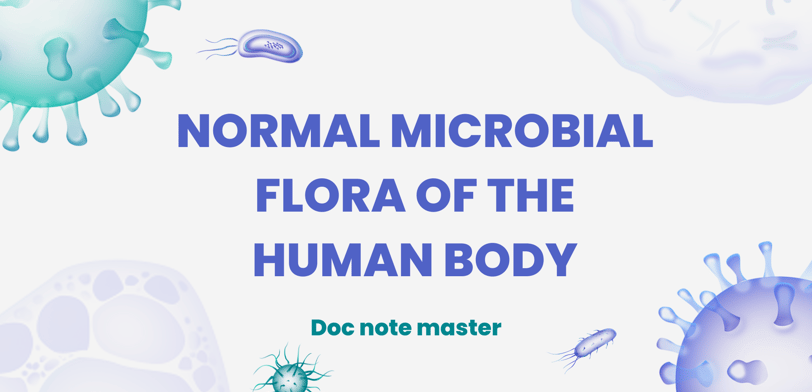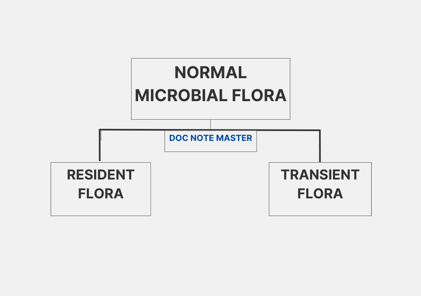online learning with Doc note master|| Himanshu paneru
Normal Microbial Flora Of Human Body
Normal flora refers to the population of microorganism that inhibit skin and mucous membrane of normal human body.
Himanshu Paneru
7/16/20241 मिनट पढ़ें


Normal Flora of Human Body
Normal flora refers to the population of microorganism that inhibit skin and mucous membrane of normal human body.
Also known as microbiota refers to the diverse community of microorganism that inhibit various part of the human body.
Microorganism include bacteria, virus, fungi and protozoa.
They play crucial role in maintaining health and preventing disease.
A healthy foetus in utero is free from microorganism.
Classification
Normal flora can be divide into two groups.
Resident flora
It consist of organism which are regularly present in a particular area and when distrubed it re-establish itself.
Example: E.coli
Role of resident flora:
Beneficial role:
They prevent or suppress the colonization invasion of the body by pathogens.
The bacterial flora of intestinal tract synthesis vitamins.
Colicins produced by some organism of normal flora have a harmful effect on pathogen.
The endotoxin liberated by them may help the defence mechanism of the body by triggering the alternative complement pathway.
Disease production:
They become pathogenic when the lost resistance is lowered.
They may act as pathogen in tissue outside their normal habitat.
Streptococcus mutans may cause dental caries.
Use of broad spectrum antibiotics affect the normal flora.
some time it may cause confusion in diagnosis due to their ubiquitous presence in the body.
Transient flora
It consist of both non-pathogenic and potentially pathogenic bacteria that inhibit the body surface or mucous membrane for a limited period.
NORMAL FLORA OF THE SKIN
Staphylococcus epidermis
Staphylococcus aureus
Corynebacterium xerosis
Micrococcus
E. coli
Proteus
Candida albicans
NORMAL FLORA OF CONJUNCTIVA
Corynebacterium xerosis
Staphylococcus epidermidis
Moraxella
Non-haemolytic stretococci
NORMAL FLORA OF NASOPHARYNX
Diptheroids
Staphylococci
Streptococci
Haemophilus species
Pseudomonas aeruinosa, E. coli, Proteus also found in normal person.
NORMAL FLORA OF MOUTH
Lactobacillus
Vibrios
Corynebacterium species
Actinomycetes
Mycoplasma
Micrococci
NORMAL FLORA OF UPPER RESPIRATORY TRACT
Sreptococcus pneumoniae
Streptococcus pyogenes
Streptococcus viridians
Neisseria meningitis
Neisseria subflav
Moraxella
Candida species
NORMAL FLORA OF GASTROINTESTINAL TRACT
Leptotrichia
Enterococci
Colon bacilli
Staphylococci
Helicobacter pylori
Lactobacillus species
Streptococcus thermophilus
Clostridium butyricum
Enterobacter species
NORMAL FLORA OF GENITOURINARY TRACT
Mycobacterium smegmatis
Propionibacterium acnes
Corynebacterium species


